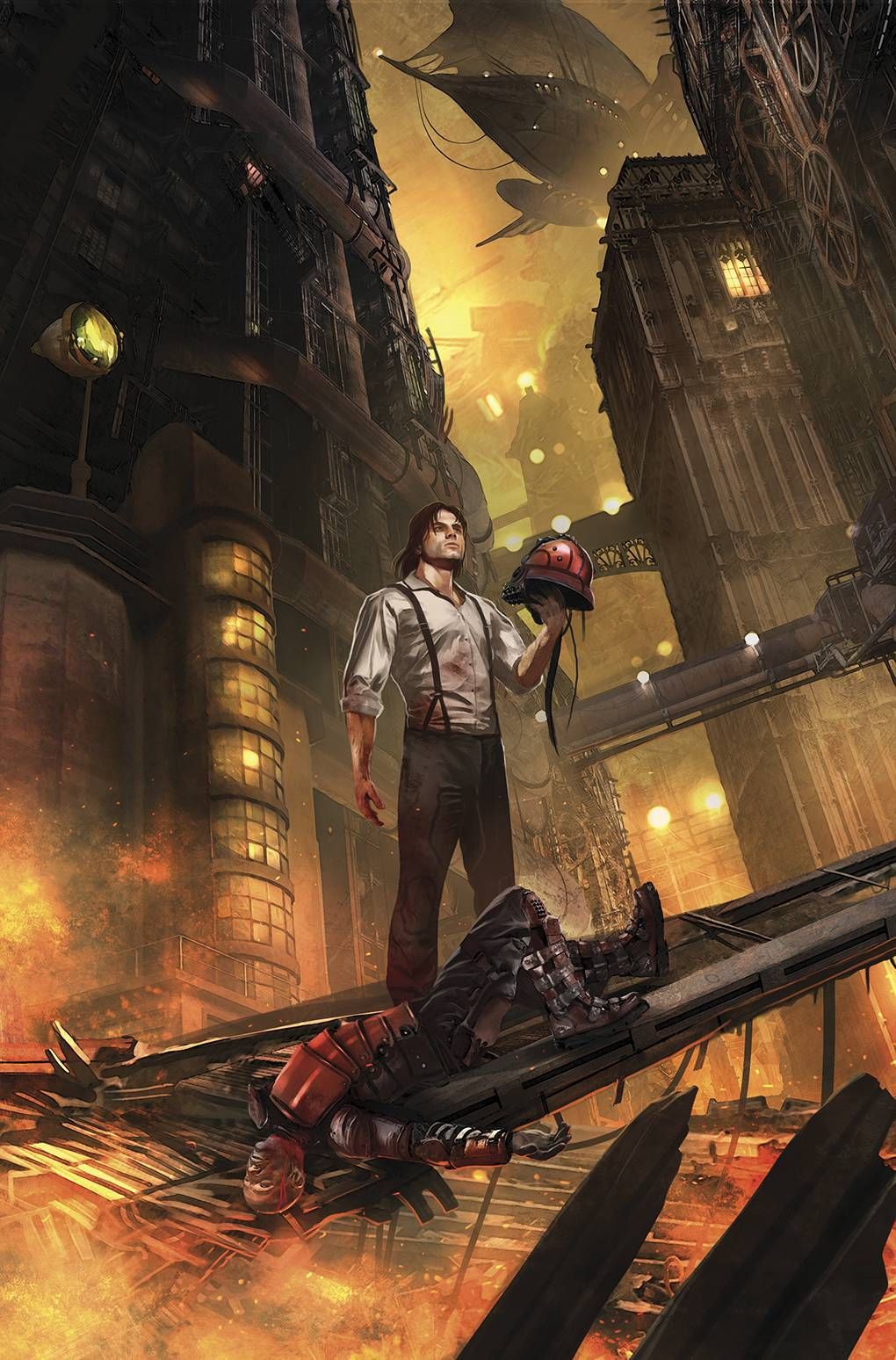Created by Trevor Crafts, Matthew Daley and Bruce Boxleitner, "Lantern City" #1 features a city that is indeed that: a steampunk-style metropolis that's a beautiful and wondrous place to live -- if you're one of the "Greys" who lives in the vast expanses of the city's heights, and not one of the far more numerous workers who toil in its depths under the watchful eyes of the imposing and brutal guards who keep order. It's a social order that's well captured by writers Daley and Paul Jenkins, but the issue's strength by far is Carlos Magno's exquisitely designed antique cityscapes, both the Lantern City's shining towers up top and it's dirty, grimy and cluttered streets below.
Anyone who read BOOM! Studios' "Planet of the Apes" title from a few years ago will remember Magno's gorgeous and intricate designs, which comprised an entirely different look but were nothing short of brilliant with their antique, almost Victorian-esque vibe. Despite the differences, Magno employs the same discipline here; the towers, churches, alleys and living rooms are all designed and executed with such craftsmanship and precision that it's as though he spent time in this reality at one point and brought some photographs back home with him. There are also the stunning Jules Verne-inspired airships; the enforcers who patrol the city's lower levels are akin to an amalgamation of Darth Vader and Nazi stormtroopers, and the cold, cramped and worn confines of central character Sander's modest home are nothing short of visual genius as envisioned.
This isn't to sell Crafts and Boxleitner's idea short, though, nor Jenkins and Daley's execution of it. The premise is as well-trodden as many of Magno's inner city streets; the working class rises against their elitist masters and their pitiless foot soldiers, but it's a notion that's made fresh by the fascinating setting and the scripters' characterizations of the main protagonists. Sander is the reluctant hero, while his friend Kendal is the inspirational leader; the roles of Sander's downtrodden wife and blissfully innocent son are a bit more cliche but galvanize Sander's character for the unexpected tactic he takes at the end of the issue.
Colorist Chris Blythe takes an appropriate stance; as most of the action takes place in the darker recesses of the city, his colors are appropriately muted and dark. There's not much more to apply here than the unobtrusive grey tones for the architecture and drab brown ones for the working class' attire. Even the red-clad guards' colors are subdued, as though to indicate that the light does not fully reach the claustrophobic confines below.
"Lantern City" #1 is a fairly simple and somewhat familiar story, but it's dressed to impress and -- because of that -- this very attractive comic most certainly does.

